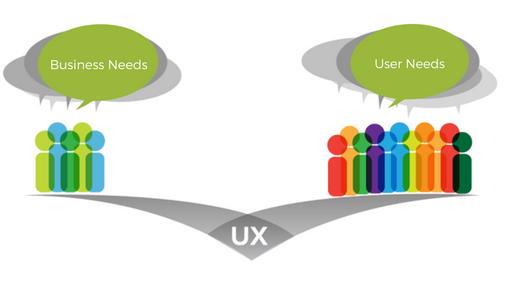Software Adoption: What Are You Doing Wrong?

In business, technology is used to facilitate everyday tasks, organise data or automate processes, but people are the ones who make success happen. However, in IT, the focus of the software development process has been placed on technology capabilities, not the needs and abilities of end users.
The complexity of software systems has come to a point where the tools seem to be too complicated and difficult to operate. They cease to support the users in their work and become a waste of money, rather than a sound investment.

The market urges organisations to explore new technologies, and they do so, by constantly adapting to new tools which arise from technological discoveries and advancements, but adopting an efficient software for the enterprise faces specific challenges for each group involved.
The two major ones are business stakeholders who are delivering (purchasing) the software and the end users.
The stakeholders are focused on business interests, have specific objectives and needs, and are the ones responsible for budgets, procurement and organisational process changes. However, they might perceive a solution for the problem in a different way. For example, if the goal is to decrease manufacturing costs, the ideas on what is necessary to do so may differ across the organisation.
For a software solution to integrate with a business, it must fit in its IT ecosystem, and this is what determines whether a product is going to become part of the company's process or not. Business unit requirements and policies usually decide which tools are adopted to support operations. Business Management and IT lead the decision-making process and are responsible for about 24% of enterprise software failures and successes.
What is often neglected is the actual user of the product. Employees in a specific business unit who are performing their duties and navigating processes and operations have different needs. There is not a one-size-fits-all technology solution for everyone, and this is something that often gets overlooked.
When the management is not focused on meeting user's needs, it often results in low software adoption, and this eventually leads to failing to meet business objectives that the software was procured to meet.
This underlines the fact that the focus of the software development project must be placed around its user. This is what the principles of Design Thinking methodology are all about, a creative and user-centered approach as opposed to traditional design approaches.

In the past few years, the field of user centered design or Design Thinking has really prospered. Both hardware and software product organisations are increasingly adopting user-centered design methods. This has resulted in innovative processes for the front end of software systems and driven the use of personas, rapid prototyping, usability testing, and iterative interaction design.
The objective is not to ask the user what they want, but to give them choices about how they get the results they are looking for. This all implies non-rigid approaches that recognizes each user and anticipates their needs.
How?
UX design is becoming more and more important when it comes to software adoption. Designing the interaction between a human and software requires intuition, attention to detail and an analytic approach that facilitates both gathering and interpreting data. With the progress of technology and the shift in human behaviour, designing software is becoming much more sophisticated. Contextual UX is becoming an element UX designers have to start considering in their work.
What is Contextual UX?
The best way to define Contextual UX would be the use of context-aware technologies which allow us to design and create personalised experiences to meet unique needs of an individual user, based on a particular situation or context of use. For UX designers, it is important to think about the specific types of user behaviour when designing how the user will interact with the content.
We have already experienced a lot of contextual computing examples in everyday life such as push notifications on mobile phones, notifying us what the weather is like, or if there is a shorter route to our destination, so this type of contextual discovery comes naturally to us.
If user experience of a chosen software is vital to its successful adoption, why isn’t its assessment usually a factor in technology selection?
The reply varies from organisation to organisation, but the fact is: most technology selection processes are incomplete as business stakeholders and IT are not assessing correctly the usability of the technology they buy.
Software tools, available on the market today, are complex and powerful. Because of this, they also may be perceived as difficult to use, and may even be seen as a change for the worse. The biggest hurdle to the success of knowledge management system adoption or virtual collaboration solutions is getting people to use them, not the technology stack. This happens because many software development processes don't incorporate user's needs adequately, or consider them later in the development process, or not at all.
Product Managers, Engineers and Requirements Analysts make assumptions about users instead of observing them and asking them about their wants and needs.

Is there a Solution?
Yes. User-centered design methods and usability testing can aid both the companies that produce them and the organisations who buy them.
On the other hand, vendors can apply user-centered design methods to make sure they produce solutions that meet users’ specific wants, needs and behaviour patterns. This is a very comprehensive process that we have personally implemented in the development of our software, and you can read more about it in this article. The organisations can test the usability of the software to ensure that the investments they make pay off.

Comments
Leave a comment